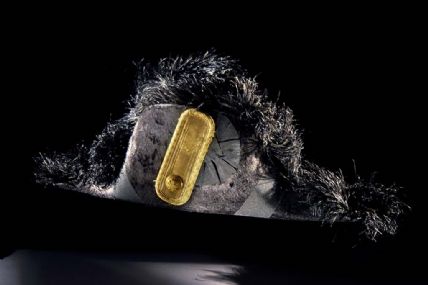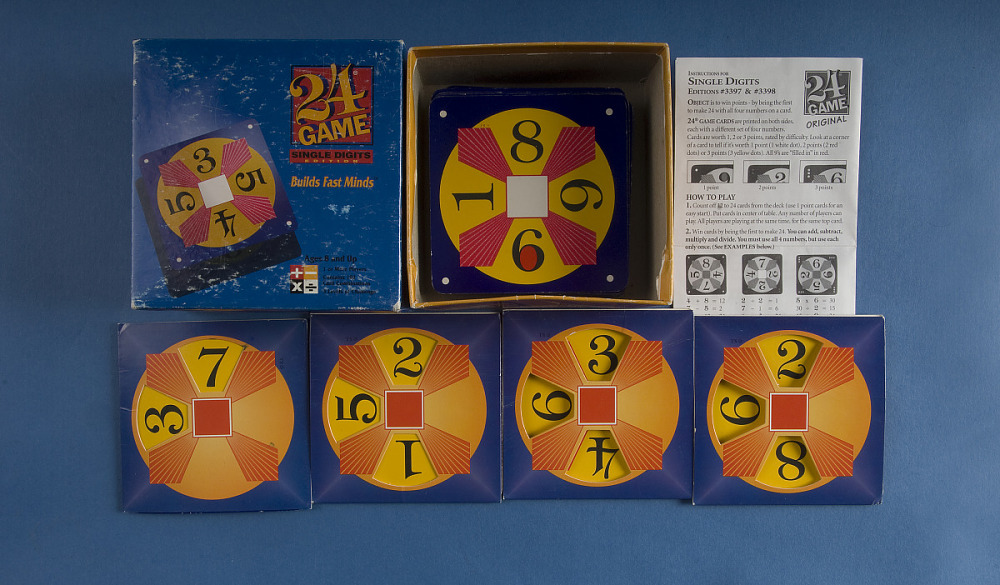As COVID-19 deaths spiked in 2020, Suzanne Firstenberg’s public art installation "In America: How could this happen…"
Museum Artifacts

Grade Range:
K-12
Resource Type(s):
Artifacts, Primary Sources
Date Posted:
12/13/2010
Physical Description
Black felt, grosgrain ribbon, ostrich feathers, and gold cockade, which is a ribbon rose or knot.
Specific History
Admiral Dewey is often pictured wearing his chapeau bras.
General History
A chapeau bras is a type of hat made

Grade Range:
K-12
Resource Type(s):
Artifacts, Primary Sources
Date Posted:
2/19/2009
This elaborate mask, made around 1980, is painted in red and black, the colors of the city of Ponce. Masks like this are typically worn by young men from the neighborhood, who don the costume of a vejigante, a character who roams the streets during Carnival, playfully scaring children an

Grade Range:
K-12
Resource Type(s):
Artifacts, Primary Sources
Date Posted:
3/12/2012
Sixteen-year-old Judy Garland wore these sequined shoes as Dorothy Gale in the 1939 film classic The Wizard of Oz. In the original book by L. Frank Baum, Dorothy's magic slippers are silver; for the Technicolor movie, they were changed to ruby red to show up more vividly against the yell

Grade Range:
K-12
Resource Type(s):
Artifacts, Primary Sources
Date Posted:
3/12/2009
Kermit, a hand and rod puppet created in 1955 by Jim Henson, belongs to America's beloved puppet troupe, The Muppets. Kermit has served as master of ceremonies, comic, and crusader for tolerance in Henson's many creative endeavors. His most memorable role was as the leading Muppet character on

Grade Range:
K-12
Resource Type(s):
Artifacts, Primary Sources
Date Posted:
8/10/2009
The steam locomotive "John Bull" was built in 1831 and ran for 35 years, pulling trains of passengers and cargo between the two largest cities of the time, Philadelphia and New York. The locomotive propelled trains at 25 to 30 miles per hour...

Grade Range:
K-12
Resource Type(s):
Artifacts, Primary Sources
Date Posted:
11/20/2009
This medal accompanied Lewis and Clark on their epochal journey West. The medal is hollow, consisting of two thin, embossed silver plates, one for each side of the medal. The two were held together by a silver ring, running around the entire circumference of the piece. The medal was created

Grade Range:
K-12
Resource Type(s):
Artifacts
Date Posted:
4/4/2016
This Coca-Cola bottle from 2002 contains brown liquid inside that it sealed with a metal cap. The greenish glass is marked with a painted Coca-Cola logo around the middle, repeated twice. On one side, a barcode is placed next to the image of a Coca-Cola bottle with condensation over it, and under

Grade Range:
K-12
Resource Type(s):
Artifacts, Primary Sources
Date Posted:
9/3/2020
These four friendship bracelets were created inside a holding center while the young girl awaited their case in seeking asylum from El Salvador. Arts and crafts are sometimes part of daily routine for the young children since they are not allowed to leave the center.

Grade Range:
K-12
Resource Type(s):
Artifacts
Date Posted:
1/2/2022
For decades, teachers drilled American school children using flash cards that gave simple arithmetic problems. The advent of inexpensive electronic calculators in the 1970s made it possible to do much routine arithmetic automatically. To teach school children the meaning of basic operations, new dev

Grade Range:
K-12
Resource Type(s):
Artifacts, Primary Sources
Date Posted:
3/19/2010
During his thirteen seasons with the Boston Celtics, Bob Cousy (b. 1928) played in thirteen consecutive All-Star Games and earned two All–Star MVP awards, among many other accolades. This “Houdini of the Hardwood” introduced speed and flamboyant ball-handling skills previously unseen in pro



















